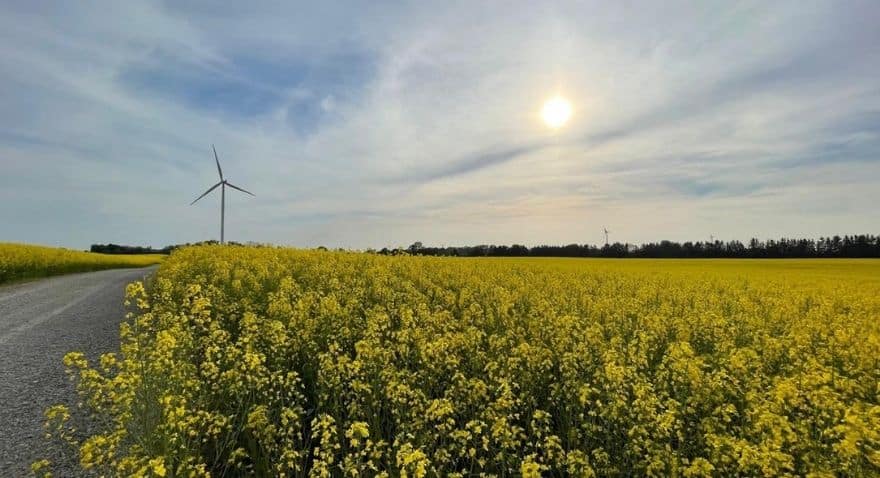
It’s hard not to notice huge fields of yellow when you’re driving through Essex County, Ontario, in May.
Known for its distinct bright yellow flowers, canola is grown by 43,000 Canadian farmers, producing millions of tonnes each year.
Trying something new in Essex County
Leo Guilbeault is a farmer in Essex County who decided to try growing canola for the first time this spring.
Other farmers in Essex County have started growing canola only in the past three years, so everyone is still mastering the crop. Leo says it has been a great experience so far, but this type of canola is a bit different from the variety grown out west.
“We’re growing winter canola. Most people are familiar with spring canola that’s grown out west. Spring canola is planted in the spring and harvested in the fall. With the hot and dry weather in southern Ontario, spring-seeded crops don’t work, including canola. But this variety is brand new and suited for our area—it’s planted in the fall and harvested in the spring.”
Because this variety is harvested early in the growing season, Leo says that leaves plenty of time to get another crop into the ground.
“The fields have recently changed from yellow to green. Now that the flowers have done their thing, the pods are forming, and we’ll be harvesting around the end of June or beginning of July. This gives us the opportunity to plant a soybean crop right after the canola comes off.”
Leo doesn’t know just yet how successful his first attempt at growing canola will be, but he suspects he’ll have a good yield.
“By all indications, it looks really good. If it all works out well, we’re going to double the acreage next year.”

“I think you’ll see a lot more acres of canola around here next year. My neighbours are interested in seeing my results, but a few of them have already put in requests for seeds for next year.”
Keeping it local
Once harvested, Leo says the canola will make the short trip down to the crushing plant at Windsor. His crop will be processed into a special kind of canola oil.
“Currently, what they do is send canola from out west to Windsor to get crushed, and from there it goes on a boat to get exported. Because there’s a domestic market for non-GMO canola oil, they’re going to use the canola grown here to make it.”
Having a crushing plant nearby and the ability of planting another crop once the canola is harvested are just two benefits that Leo says are attractive to other farmers.
“I think you’ll see a lot more acres of canola around here next year. My neighbours are interested in seeing my results, but a few of them have already put in requests for seeds for next year.”
His neighbours aren’t the only ones noticing the fields of gold, though.
“Lots of people stop by the field to take pictures. We could probably create a side business just with photography for the three to four weeks that the crop is in flower. It definitely gets busy when the fields are yellow.”